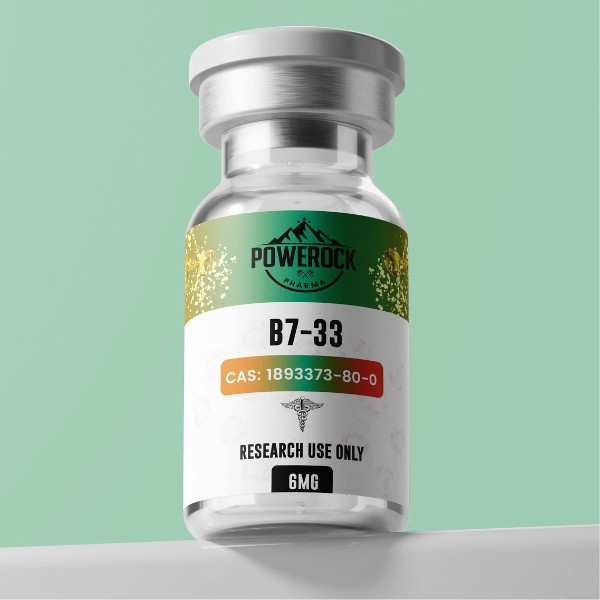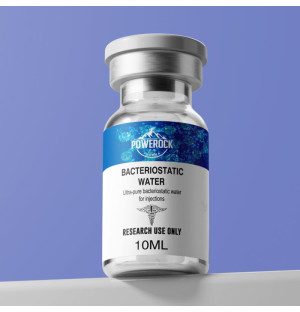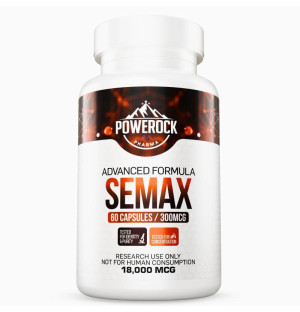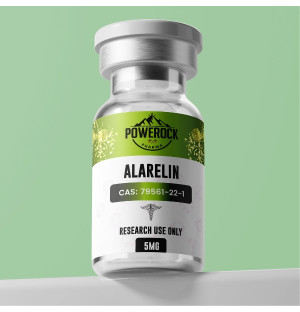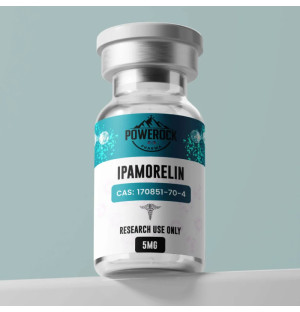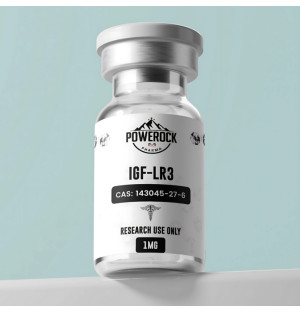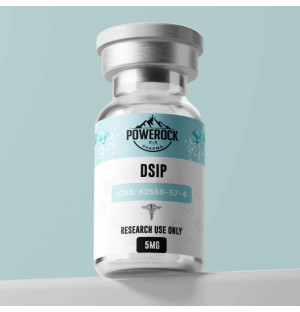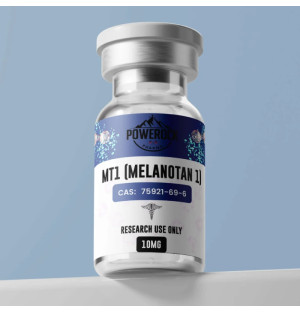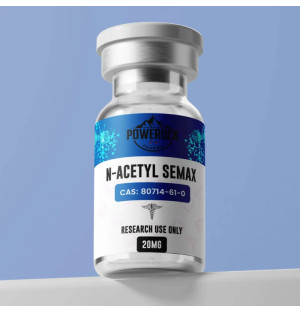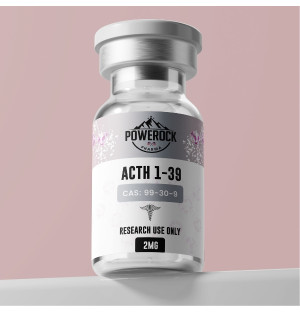Powerock Pharma B7-33 6 mg
Powerock Pharma ensures results and pure B7-33, which counteracts fibrosis processes and supports tissue remodeling by selectively mimicking relaxin activity to prevent scar tissue formation and protect the cardiovascular system, offering precise research outcomes without side effects.
B7-33 (RELAXIN ANALOG) 6 mg
B7-33 (Relaxin-2 Analog) is an advanced, high-purity research peptide designed as a selective agonist of the RXFP1 receptor. This compound represents a breakthrough in research on soft tissue regeneration and anti-fibrotic processes. Its unique structure allows it to mimic the beneficial properties of the relaxin hormone while eliminating undesirable hemodynamic effects. This specificity makes B7-33 a key reagent in studies concerning extracellular matrix remodeling, tendon injury treatment, and organ protection against fibrosis.
B7-33 Powerock Pharma - Properties
Discover the potential laboratory properties of B7-33 peptide that can revolutionize research on rapid structural damage recovery and tissue elasticity.
Fibrosis Reduction
Inhibits excessive collagen production, preventing the formation of rigid scar tissue at the injury site.
Structural Regeneration
Accelerates repair processes in tendons and ligaments, restoring their original architecture.
Heart Protection
Demonstrates strong cytoprotective action on heart muscle cells in ischemic models.
Selective Action
Precisely activates the RXFP1 receptor without causing systemic water retention.
Tissue Elasticity
Supports research on restoring full mobility and elasticity of fascial structures.
Precise Mechanism
Targeted action on the pERK1/2 pathway promoting the degradation of pathological deposits.
High Purity
≥98% peptide purity confirmed by HPLC method for research reliability.
Research Quality
Manufactured according to GMP, HACCP, and ISO 13485 standards (Use Research Only).
How B7-33 Works (Research Mechanism)
- RXFP1 Receptor Activation: B7-33 binds selectively to relaxin receptors, initiating a tissue repair signaling cascade without affecting renal receptors (no edema).
- Excess Collagen Degradation: Stimulates the production of metalloproteinases (MMP), which "dissolve" improperly formed scar tissue in the model organism.
- Anti-fibrotic Action: Blocks the TGF-beta1 pathway, which is crucial in preventing tissue hardening after mechanical injuries.
- Angiogenesis Support: May promote the formation of new blood vessels in damaged areas, improving their nourishment (observed in combination with e.g., BPC-157).
- Cytoprotection: Protects cells from death (apoptosis) under conditions of oxidative stress and inflammation.
Why Choose B7-33 from Powerock Pharma?
At Powerock Pharma, our priority is to provide only the highest quality peptide reagents. Every batch of B7-33 is manufactured in laboratories compliant with GMP, HACCP, and ISO 13485 standards. Our strict quality control supervision and use of state-of-the-art testing procedures (HPLC, MS) ensure not only the chemical stability of the lyophilizate but also its biological purity. Collaboration with leading research units to ensure purity ≥98% guarantees reproducible experiment results. By choosing Powerock Pharma, you opt for precision, procedural safety, and professionalism in supplying materials for regeneration research.
Research Protocol
Application Method:
B7-33 is a lyophilizate intended for reconstitution in bacteriostatic water. In laboratory conditions, the solution is most commonly applied subcutaneously (s.c.) using precise measuring tools.
Research Frequency:
Due to the short half-life of the peptide, research protocols suggest once-daily application, maintaining constant time intervals to keep stable substance concentrations in the tested system.
Research Cycle Period:
The standard observation cycle for B7-33 is 4–8 weeks. This period allows for full documentation of changes in the extracellular matrix structure and assessment of the degree of fibrosis reduction.
Recommended Amount for Model A:
In studies on Model A subjects (female), the dose is strictly correlated with body mass. The starting protocol assumes 10–20 mcg per kilogram of the test subject's body mass.
Recommended Amount for Model B:
For Model B (male), higher concentrations are typically used. The research standard suggests a range of 20–30 mcg per kilogram of body mass, with the possibility of titration depending on the extent of the studied fibrosis.
Monitoring:
Strict monitoring of the application site for local reactions and regular assessment of histopathological parameters of tissues exposed to the peptide are required.
Frequently Asked Questions
- After reconstitution (dissolving), B7-33 should be stored at 2–8°C (refrigerator) and used within 14–21 days to maintain full peptide integrity.
- Yes, this is a common research practice ("stacking"). BPC-157 supports angiogenesis, while B7-33 prevents scarring, which produces a synergistic, comprehensive tissue regeneration effect in studies.
- No. Studies show that B7-33, thanks to its selectivity, does not activate receptors responsible for vasodilation and water retention, making it a safer research model.
- B7-33 demonstrates a very good safety profile in preclinical studies. However, cyclical use with breaks is recommended to avoid potential receptor desensitization.
- Unreconstituted vials should be stored in a cool place (preferably 2-8°C), away from sunlight. Under these conditions, the product maintains stability for a long time.
- Every batch undergoes rigorous purity testing (HPLC >98%) and mass identification. Production takes place in laboratory standards, eliminating the risk of cross-contamination.
Calculator for measuring research doses
Tip: 1 MG = 1000 MCG

